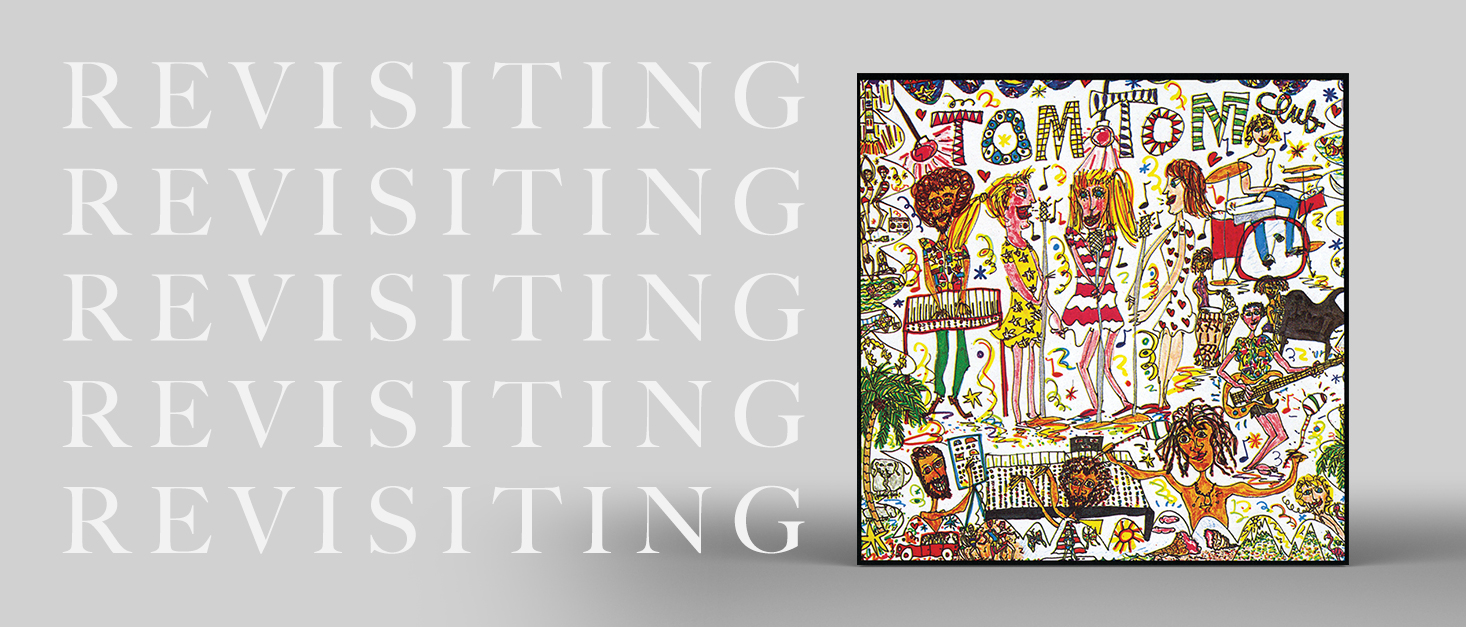“There was a vibe there, that was all about the art of making music.” This was how Chris Frantz once described Island Records founder Chris Blackwell’s Compass Point Studios in Nassau, Bahamas – a venue that was used to record some of the best music of the late 1970s and early 80s. Popular due to its beautiful location and excellent recording team, it is where Frantz and his partner Tina Weymouth recorded their first Tom Tom Club album.
Weymouth and Frantz, both founding members of Talking Heads, ended up at Compass Point after asking Blackwell to sign them. According to Weymouth, Blackwell had always regretted not signing Talking Heads, so when David Byrne took a break from the group to work on a solo record, Weymouth and Frantz approached Blackwell, and found themselves at the studio alongside some of the 1980s’ most exciting acts.
“When we got to Compass Point studio, Grace Jones was in Studio A,” Weymouth later explained. “Meanwhile in Studio B, I got all my courage up to ask Chris to ask if we could work with Steven Stanley, its engineer. He said, “sure, why not?”, so we cut the rhythm beds for ‘Wordy Rappinghood’, ‘Genius of Love’ and ‘Lorelei’. At the end of three days, we invited Chris in and he said, “Great, make an album!”
All this came as a big surprise at the time, not least to Talking Heads fans. It was a huge departure for the band’s bass guitarist and drummer, who had been serving up the rhythms for New York’s most respected post-punk art rock group. The new record sounded far funkier than their previous work, and in America’s then largely segregated music scene, it was initially widely thought to have been created by Black musicians. In truth, it was a glorious mish-mash of contributions from skilled musicians of differing backgrounds, including rhythm guitarist Monte Brown from Bahamian funk group T Connection, Jamaican percussionist Uzziah "Sticky" Thompson, keyboardist and member of Bob Marley and The Wailers Tyrone Downie, and guitarist Adrian Below, who played alongside alongside Frantz, Weymouth, and her sisters, Lani and Laura, both of whom provided vocals.
By the time Tom Tom Club was released in October 1981, Weymouth and Frantz were well established with Talking Heads. The pair had co-founded the band with David Byrne, after the three met at Rhode Island School of Design.
“I met Tina there and David Byrne there, and we became friends, and after we graduated we moved to New York City along with David and got a loft on the Lower East Side,” Frantz once explained. “This happened to be three blocks from a little club called CBGBs, and we were fascinated by what we saw there – people like Patti Smith, the Ramones, Blondie, Television…. It was 1974, and a very exciting time.”
Reflecting on Talking Heads’ musical output, Weymouth later recalled: “We always felt like when we made a record, we should do something a little surprising to our fans.” When David Byrne took time out to work on his own music, Weymouth and Frantz felt under pressure to deliver a worthwhile project as solo artists.
The first song they recorded was ‘Wordy Rappinghood’. “We had nothing written when we went into the studio,” Weymouth once recalled. “We were thinking it would just come as a brainstorm, once we got into the studio – and it did!”
Frantz later remembered, “We recorded the music, and then Tina said, ‘I don’t really feel comfortable about singing’ and I said, ‘but Tina you don’t have to sing, there’s this new thing called rap! You can just rap.’” This was one month before the release of Blondie’s ‘Rapture’ – the first rap song to top the US charts – and Weymouth found it hard to do.
“I’m not really a singer or a rapper,” she later said. “I had been a painter, I had been a guitarist, but I hadn’t been a wordsmith or a writer. So I felt exceedingly challenged. I thought, ‘oh, words, words, words!’ and was just driving myself crazy, then I came up with the idea that it was going to be about words. I was trying to get beyond words, because words can become very mind limiting. Words have a crippling way of restricting what you think is possible. At that point it was our first and only song, so I wanted to say everything I felt at the time, in a three-minute track.”
During a conversation with her sisters, Weymouth was reminded of a Moroccan children’s song, ‘A Ram Sam Sam’ that the siblings used to sing on childhood trips to France. She decided the three of them should sing it in the studio, and this became the track’s famous vocal refrain.
Reflecting on this moment of inspiration, Weymouth later explained: “Lani grabbed me and said, “hey do you remember when we were kids, and we were in France, and we’d be walking down the street singing this song that made no sense at all?” Later we would learn that it came from Africa, but of course we had garbled all the words as children do. And I said, “stop, that’s it, we’re going in the studio and that’s what we’re gonna sing. And that way they won’t be mad at us for having no ideas!” According to Frantz, “When the girls came back into the studio and did that, the engineer Steven Stanley and I said: “Eureka, this is it!”
The track was released while the group were still putting the finishing touches to their album, and it went on to chart in several countries. It was an impressive debut for Tom Tom Club, but it was the album’s next single, ‘Genius of Love’ that became the group’s biggest hit.
Frantz said he was inspired to create the music that formed the starting point for ‘Genius of
Love’ after listening to US funk band’s debut single, ‘More Bounce to the Ounce’. As Weymouth later recalled, ‘Genius of Love’ was a challenging track to record: “Everyone was doing 120 beats per minute, but this was 103 bpm,” she once explained. “We didn’t have samplers, everything was done with tape. The challenge was trying to create vocals. We found this great rhythm guitarist called Monte Brown, who’d worked with KC and the Sunshine Band, George McCrae, those kinds of artists. He played this very simple rhythm part, it was amazing when married to great synth parts and drum parts.”
These two shuffling, hypnotic tracks form the backbone of Tom Tom Club, the album. At the time, its sound felt striking and highly distinctive – ultra clean and percussive, with really unusual mixing. Weymouth’s bass guitar was deliberately tuned down to around 150Hz, keeping it well away from the kick drum. At the same time, a Sequential Prophet 5 synthesiser was used for the many squelchy electronic sounds and effects, along with extensive use of the 24-track studio that the band had at its disposal.
Weymouth and her sisters’ vocals were recorded using three mics close together, with each of the album’s harmonies tracked three times. Reflecting on the group’s time at Compass Point, Weymouth later said: “The studio was great, having nature all around and nothing to distract us from our work. We were able to use our different personalities to create a new chemistry.”
According to Frantz, Blackwell was a great producer, who was keen to support the band without stifling their creative flow. Studio engineers Benji Armbrister and Kendal Stubbs also helped contribute to the album’s sumptuous feel. Engineer Steven Stanley was a prodigious talent, having previously learned the tricks of his trade when recording at Compass Point with Sly and Robbie.
Although ‘Genius of Love’ only reached No. 65 in the UK singles charts – ironically this album’s workmanlike cover of ‘Under the Boardwalk’ fared much better – it soon took on a life
of its own, becoming sampled by numerous artists. A raft of musicians have since covered it, from Grandmaster Flash to Mariah Carey. Over 40 years on, both the track and the album present themselves in a very special way.
The album was recorded at a time when analogue studios were at their peak in terms of sonics. They finally had relatively noise-free mixing desks, and were much more sophisticated than those which had arrived just a few years earlier. Digital recording, and/or sequencing, sampling and effects had yet to gain traction, so everything had to be made by the instruments available, played by virtuoso session musicians, the old fashioned way. Funky and fun, it’s a pleasant, saccharine reminder of how things once were.















